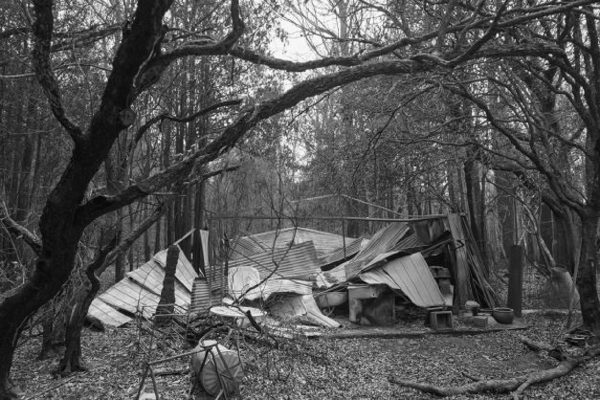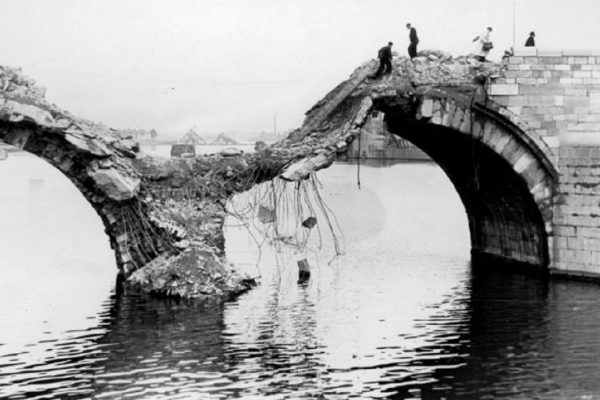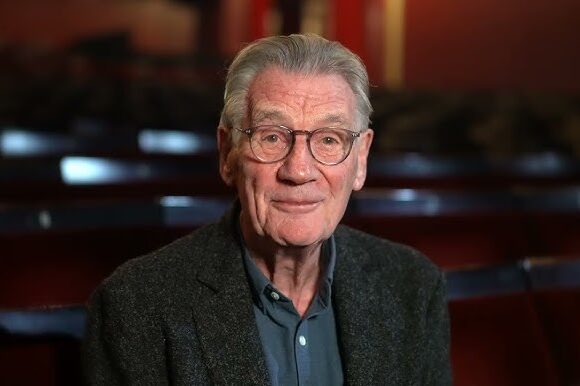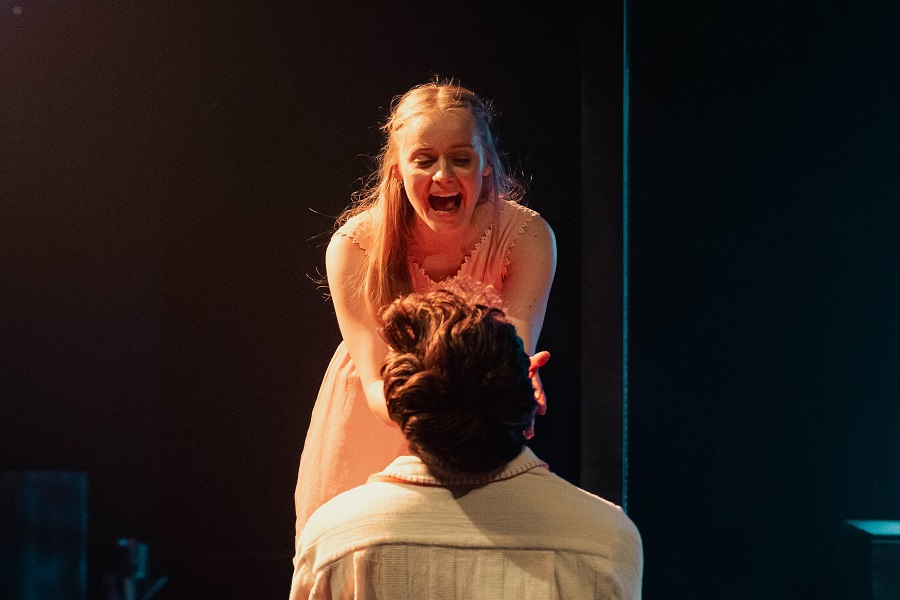
Photography / “Between Hope and Despair” by Natasha Fijn. At Photo Access until May 21. Reviewed by CON BOEKEL.
OCCASIONALLY an exhibition comes along that is close to the bone for deeply personal reasons. “Between Hope and Despair” by Natasha Fijn is one such.
The late Jan Reinder Fijn was a professional photographer. He lived in Maastricht in the Netherlands during the German invasion, occupation, and retreat – “despair” and “hope”. There was heavy fighting because the bridges over the Maas River were important strategically. Jan bravely photographed what he saw. Two generations later Natasha Fijn, granddaughter of Jan, photographed the destruction and recovery of the 2019-2020 Australian megafires – “despair” and “hope”.
The exhibition juxtaposes images by grandfather and granddaughter. It provides a brief glimpse of Jan’s photo album with its acutely-observed, hand-written captions. It includes Natasha’s original work as well as her reworking, as prints, of some of Jan’s photos.
The war imagery and the fire imagery immediately triggered deep and multi-layered personal emotions. These relate directly to some terrible family experiences of war and of fire.

How to stand back and to make general sense of such an exhibition? A useful starting point for conceptualising Jan’s photography is the Dutch Resistance Museum in Amsterdam. It brings my Dutch family war stories, along with Jan’s photos, into a brilliantly lucid focus: wars create only bad choices.
“Hope” is qualified. Jan’s evocative photo of the man cutting the hair of the women who had been lovers of German occupation soldiers is an intimate but brutal reminder of this. Natasha’s burnt landscapes are at times simplified visually and reflect simplified ecologies. Complexity – and some degree of resilience – has been burned out.
Ultimately, responses to the issues depend on the quality of the photography and, to a lesser extent, on the exhibition curation. It requires from the photographers an eyes-wide-open integrity. It helps that Natasha is trained in participant observation and that Jan was a skilled photographic observer. The documentary intent is clear. Their photographs duly do what only photographs can do: freeze fire in moments of time.

The photographers do not hide their presence. Some of Jan’s images are the very essence of street photography. Some vantage points generate a powerful immediacy. Others, distanced, invite quiet contemplation. There is no mawkish sentimentality in the choice or treatment of subjects. The compositions are, at times, extremely good. War and fire consequences are allowed to speak for themselves.
Natasha has reworked some of Jan’s photos into modern prints. I prefer the historicity of the originals in Jan’s album – perhaps because the general look is the same as the general look in my family albums of the same era. The treatment of tones is more satisfying in the originals.
Various elements of Natasha’s photos echo those that appear in Jan’s. She has curated some of them as pairs. This can work well as in “St Servatius Bridge, 1944” paired with “Burnt out shed, Plumwood Mountain, 2020”.
Natasha’s moist snail in “Newly emerged snail after fire, 2020”, slides across a burnt substrate. It is counter-intuitive and is a fresh image in the crowded and sometimes hackneyed fires genre. It serves as a metaphor: one must have hope, pick up the pieces, and move on.
The Fijn family, like so very many families who now live in safe-haven Australia, was torn adrift by war. They migrated first to NZ then to Australia. This multi-generational exhibition is an expression of shared loss, gain, despair and hope. Ironically, in escaping the fires of war, the family now faces a war with fires.
This exhibition will touch raw nerves for many Australians. As for war, so for fire.
Concurrently exhibited at PhotoAccess are “Eating Wild Weeds” by Alex Flannery and “Archive Apparitions” by Elise DeCourcy.
This trio of photographic exhibitions is well worth a visit.
Who can be trusted?
In a world of spin and confusion, there’s never been a more important time to support independent journalism in Canberra.
If you trust our work online and want to enforce the power of independent voices, I invite you to make a small contribution.
Every dollar of support is invested back into our journalism to help keep citynews.com.au strong and free.
Thank you,
Ian Meikle, editor




Leave a Reply